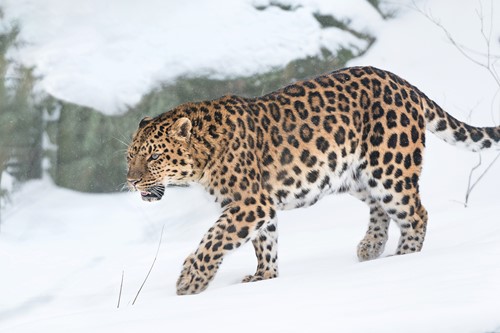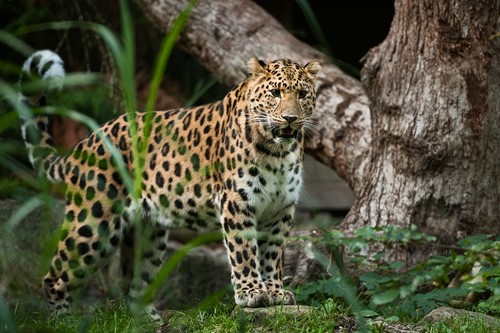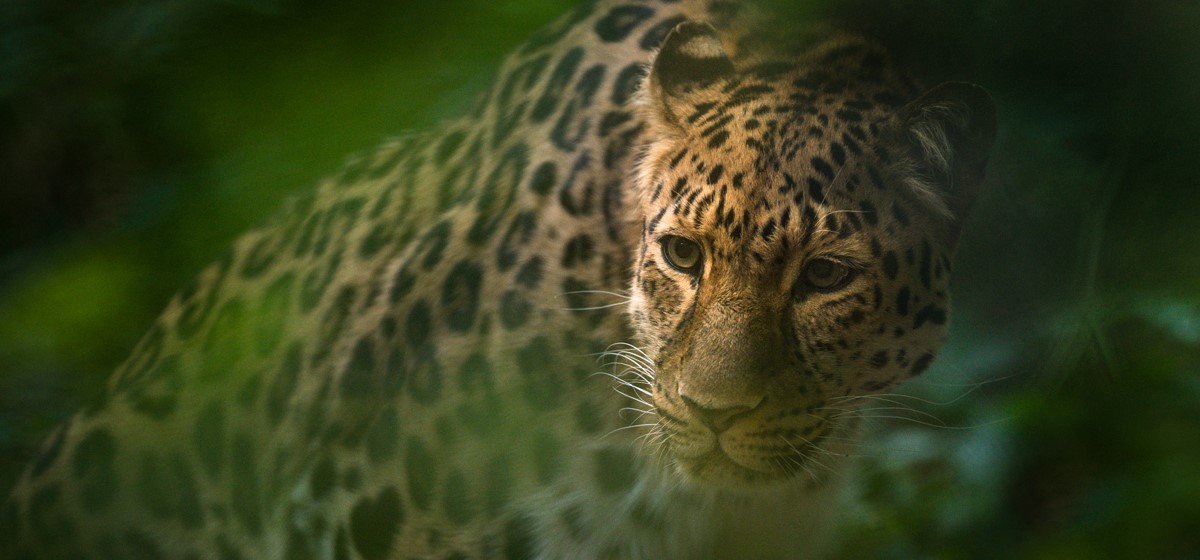Amur leopard conservation
The Amur leopard is the world's most endangered feline and also the northernmost leopard of the eight subspecies. The species is found in temperate forests in the Russian Far East and northeastern China. Despite the cold climate, the Amur leopard is well adapted thanks to its thick and dense fur. The Amur leopard is mainly solitary and can maintain a territory that can be between 50-400 square kilometres.
In the middle of the 20th century, the number of Amur leopards declined sharply due to poaching of leopards and their prey, but also as a result of habitat loss. Forests are cut down to make more room for domestic livestock and when prey animals become fewer, the leopard is forced to hunt domestic livestock, which leads to conflicts with humans. At the end of the 1970s, fewer than 30 individuals of the Amur leopard remained in the wild and it is classified as critically endangered by the IUCN.

Recently, there has been a small increase in the number of Amur leopards, with the latest figures indicating around 100 individuals in the wild. The increase is a result of conservationists' hard work to reduce threats to the leopard, but the situation is still very critical as the current population is heavily inbred. A breeding and release center is therefore now being built in the Primorsky region in the Russian Far East. Here, the plan is for Amur leopards born in captivity to be trained to cope with a life in the wild. After training, they will be released into the Lazovsky Zapovednik nature reserve, a protected area where the species used to exist.
An important milestone for the conservation of Amur leopards is the establishment of the Land of Leopard nature reserve in 2012, a roughly 250,000-hectare forest area in the Primorsky region. Around 60% of the world's Amur leopards are estimated to live within the reserve, making it a vitally important protected area to prevent the Amur leopard from becoming extinct.
Today, there are more Amur leopards in zoos than in the wild. The global zoo population in 2022 amounted to around 220 individuals and the majority of these are part of structured breeding programs. The purpose of a breeding program is to maintain genetically sound rescue populations of endangered animal species. The Amur leopard's rescue population will have an incredibly important role in the future release project in Russia by, among other things, being able to supply the breeding- and release center with genetically valuable breeding animals.

Nordens Ark's work
Nordens Ark has kept Amur leopards since 1997 and has since been an active member of the European breeding program. With our Amur leopards in the park, we contribute to the rescue population.
Between 2021-2023, we also financed active conservation efforts in the field. In collaboration with the World Wildlife Fund and WWF Russia, we were working to prepare for the future release project. Among other things, we conducted a genetic study to check and evaluated the current genetic variation of the wild population in the Land of Leopard. We also made a risk analysis and looked at what potential threats the released leopards may face in the wild, and how to minimize these. One such threat is various infectious diseases, for example distemper, coronavirus, parvovirus and rabies.
In 2023, WWF's operations in Russia were declared "undesirable" and all of its operations illegal in the country. It is also not allowed to donate money to the organization or to share its materials online in Russia. Due to this decision, Nordens Ark no longer has the opportunity to participate in the field work and contribute to the conservation of the Amur leopard in the wild in Russia.


